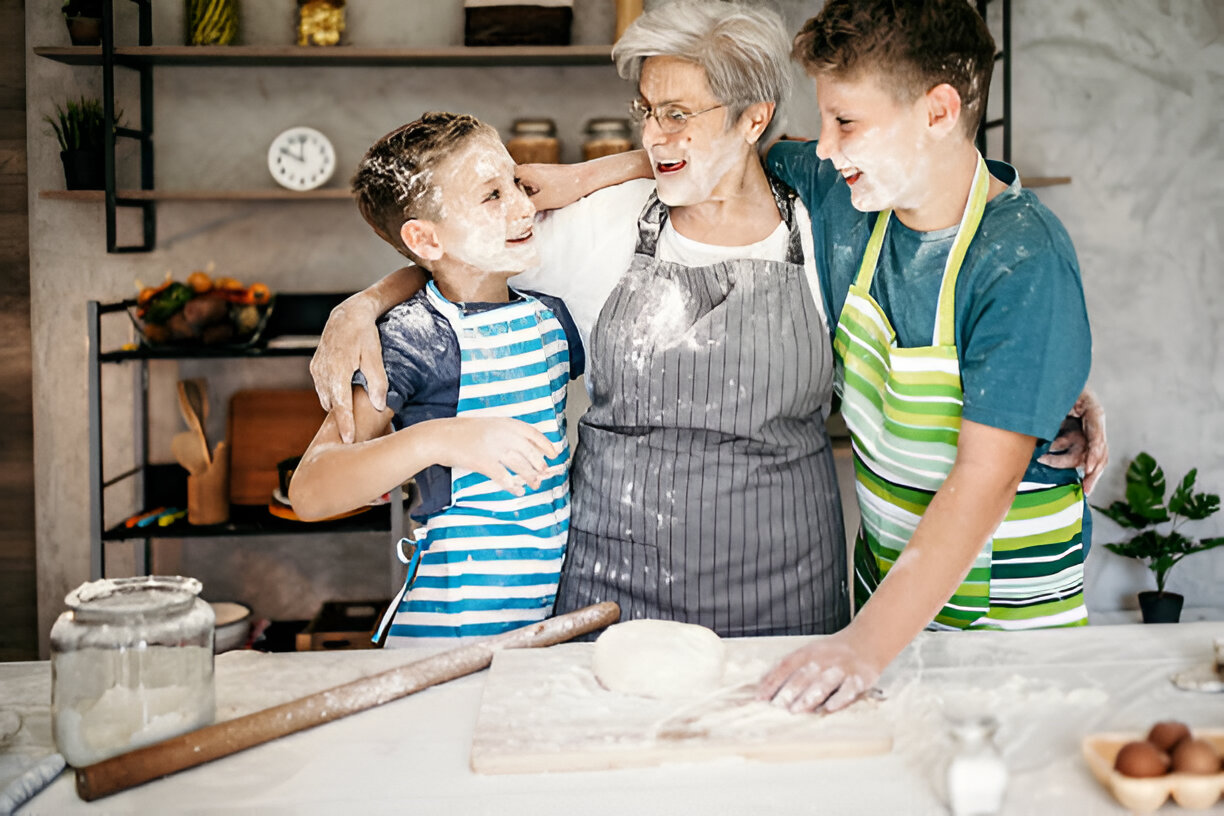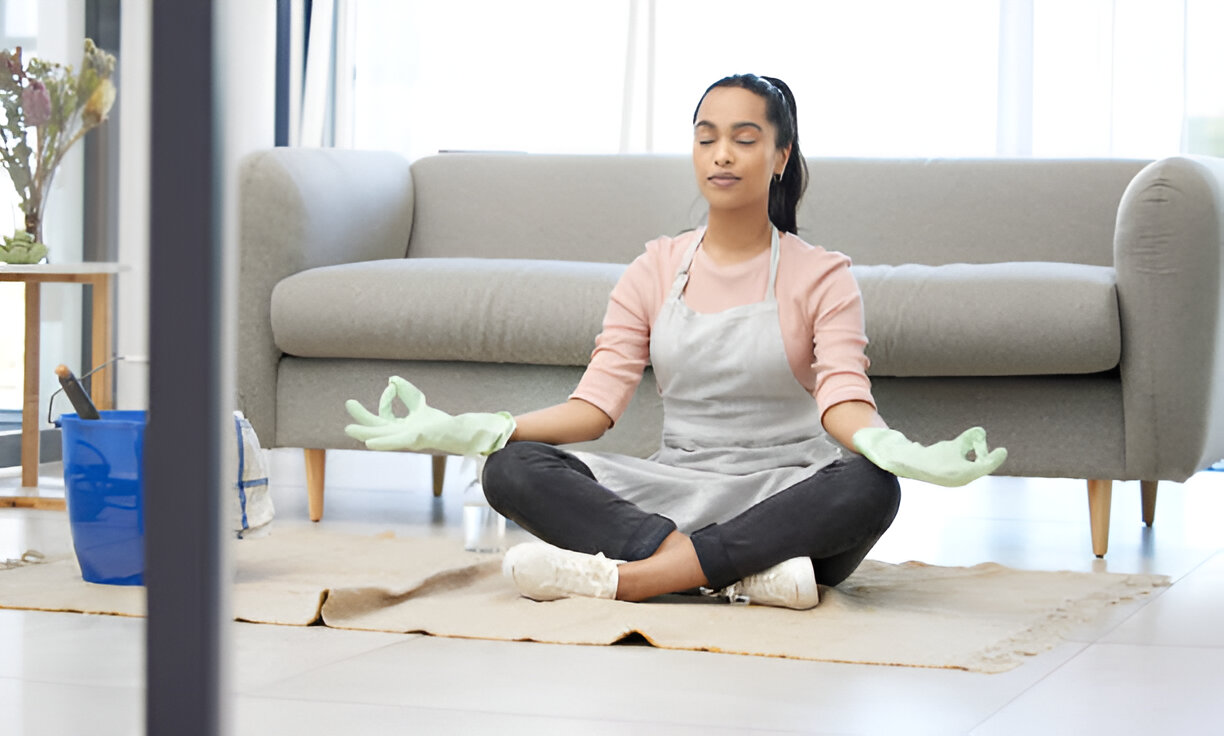In This Article
Your body holds more than just bones and muscles. It carries the stories of your days, the weight of your thoughts, and the rhythm of your breath. If you’ve been waking up with stiff shoulders or feeling heavy before the day has even begun, then it may be time to try something new. A body workshop offers you a chance to reconnect with yourself through gentle, mindful movement that brings softness and energy to your mornings. This simple, supportive practice can be your personal path to comfort, ease, and a deeper sense of well being.
You don’t need fancy equipment or a perfect routine. You only need a little space, a bit of time, and a willingness to move with care. These workshops focus on helping you feel comfortable in your body, no matter your age or ability. With regular practice, you'll notice fewer aches and a lighter spirit. Think of it not as a workout, but a return home to your body.
Let’s explore how you can build a daily rhythm that works with you, not against you. Together, we’ll walk through small yet powerful movements that open up tight spaces and soften hardened stress. We’ll make room for breath, presence, and ease. So, take a deep breath, let your shoulders drop, and prepare to meet your day from a place of calm and strength. Your body workshop begins right here.
What Is a Body Workshop?

A body workshop is a space where you slow down and listen to your body. It isn’t about chasing sweat or pushing past pain. It’s about showing up with care, curiosity, and kindness for yourself. These workshops blend movement, breath, and body awareness to help you build strength, mobility, and a softer connection with yourself. Whether you’re stretching on a pilates mat or gently rolling your shoulders, the focus is always on how you feel, not how you look.
In many classes, you’ll notice that the approach is simple and clear. You move with intention, breathe with purpose, and begin to notice areas of tension or discomfort. Each session is a chance to loosen, lengthen, and rebuild a more trusting relationship with your body. It’s a form of self-care that reaches beyond the physical into your energy, emotions, and even your mindset. With consistent sessions, you begin to carry this sense of ease into other parts of your life.
Think of the body workshop as a tune-up for your whole system. It helps prevent injury, reduces stress, and improves your natural range of motion. You might attend in person or join a session online, but the goal remains the same: to feel more grounded, more flexible, and more in touch with yourself. These workshops are suitable for everyone, from beginners to seasoned movers. You simply start where you are, and grow from there.
Why Mornings Matter: Movement as Medicine
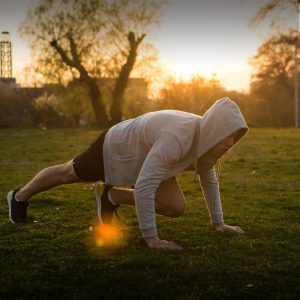
There’s something sacred about early mornings. The world is quieter, your thoughts are gentler, and your body is just waking up. This is the perfect time to check in with yourself before the day speeds up. A morning body workshop can ease you into motion with softness and purpose. Rather than rushing, you give yourself space to begin the day with clarity and care.
When you move in the morning, you activate your breath, circulation, and energy. It wakes up your joints and muscles and can help prevent stiffness later in the day. Starting with slow, mindful movement can also boost your mental clarity and improve your emotional well being. Just 15 to 20 minutes of gentle pilates or guided stretches can make a huge difference in how you navigate the rest of the day. It’s about creating a beginning that supports your full body, mind, and spirit.
Here are three simple movements you can try:
- Shoulder rolls – to melt away tension and open the chest
- Cat-cow stretch – to mobilize the spine and awaken the core
- Seated side bends – to release the side body and improve breath
These easy movements require no equipment and are suitable for all bodies. With regular practice, you may notice you’re not only more flexible but also more centered. This is your personal space to prepare for the day ahead and protect your energy. That’s the quiet power of morning movement.
READ ALSO: Back Muscle Exercises For Strength And Balance
Softer Shoulders, Calmer Mind

Your shoulders carry more than just bags and jackets. They often hold your stress, worries, and unspoken emotions. That tightness you feel at the end of a long day? It’s your body asking for care. The body workshop gives you the tools to listen and release that tension in a kind and supportive way. Loosening your shoulders can create a ripple effect that calms your entire nervous system.
Through guided movement, you can gently explore where your body feels heavy or tight. Simple circles, light resistance, or even breath work can do wonders. When paired with mindful breathing, these movements allow the upper back and neck to soften and relax. You don’t need to push or pull — just breathe and let gravity help. This focus on subtle sensations builds body awareness and encourages healing from within.
In these classes, you're taught to move with patience and curiosity. Each session helps reduce chronic pain and invites in comfort and confidence. You’ll find that as the body lets go, the mind begins to follow. Emotional tension starts to lift, and you begin to feel lighter in both thought and posture. This gentle release creates more room for joy, breath, and peace.
And remember, it’s not about doing it perfectly. It’s about showing up consistently and allowing yourself to feel supported. When your shoulders soften, your whole being responds. That’s where transformation begins — not in effort, but in release.
Exercises You Can Try Today
You don’t need a full studio or fancy tools to begin. Your home can become your own little body workshop space. These movements are light, grounding, and safe for most people — and they’re especially good for opening the shoulders, relaxing the spine, and improving your range of motion. If you feel discomfort, ease up and listen to your body. Each of these exercises is about feeling, not forcing.
- Shoulder rolls – Sit or stand tall. Inhale to lift the shoulders, exhale to roll them back and down. Repeat for 1–2 minutes to create space and ease.
- Wall angels – Stand with your back against a wall. Slowly raise and lower your arms in a snow-angel motion. Focus on breath and control. This improves posture and reduces shoulder pains.
- Seated twists – Sit cross-legged or on a chair. Inhale to lengthen the spine, exhale to gently twist to one side. This supports spine health and helps release deep tension.
- Breath with movement – Try lifting your arms on an inhale and lowering on an exhale. It might sound simple, but it trains the body and mind to connect with the breath.
Each movement should be done with care and awareness. These are more than stretches — they’re little moments of healing and presence. With daily practice, you’ll notice less pain, more mobility, and an improved sense of well being. Your energy shifts, your focus sharpens, and your spirits begin to lift.
The Magic of Mind Body Workshops

Mind body workshops go deeper than traditional classes. They help you connect what you feel with how you move. Instead of following fast-paced routines, you learn to move with intention and awareness. These sessions are often taught in small groups, which creates a more supportive and safe space to grow. Everyone is encouraged to move at their own pace and listen to their own needs.
The blend of movement and breath in these workshops creates lasting change. Not just in your flexibility or posture, but in how you see and care for yourself. The goal is not to become perfect, but to become present. When the mind and body move together, healing happens naturally. You’re not just learning movements — you’re learning to live inside your body with more ease.
These workshops can include pilates-inspired movement, breath work, guided relaxation, or even soft music. They’re especially helpful for people dealing with chronic pain, stress, or injury recovery. Over time, you build strength in your body and peace in your mind. The experience is both grounding and freeing.
Joining a mind body workshop may feel like a small step, but the results can be profound. You start to trust your body again. You begin to feel more connected, more alive. That’s the magic that happens when movement meets mindfulness — and when you commit to caring for yourself with consistency and love.
READ ALSO: Gym Attire for Women, Minimal Meets Functional
A Week of Whole Living: Sample Workshop Flow

A consistent weekly rhythm can help you create a lasting habit of self-care. By carving out even a little time each day, you start to build a life rooted in presence and body awareness. This sample body workshop schedule is designed to gently guide you through a week of nourishing movement. Feel free to adjust it to suit your needs or energy levels. It’s here to support you, not pressure you.
- Monday: Morning breath work and light stretches to awaken the body
- Tuesday: A short pilates mat session for core awareness and posture
- Wednesday: Shoulder and spine release movements with soothing music
- Thursday: Restorative movements or a free-flowing stretch session
- Friday: Gentle strength and mobility exercises for the full body
- Saturday: Join a mind body workshop class or group session
- Sunday: Stillness, journaling, or a guided breath and movement meditation
This routine isn’t about perfection. It’s about presence. Each day invites a different way to connect with your body and energy. Even just 10 to 20 minutes can shift your mood and reduce body pains. Over the weeks, you’ll likely notice how your strength, range, and confidence grow.
Whole living is not just a concept. It’s a practice that unfolds one breath, one movement, and one week at a time. You’re not just doing exercises — you’re creating space in your life to feel, heal, and connect. Keep going. You’re doing beautifully.
How Body Workshops Support Everyday Life

Body workshops don’t end when the class is over. What you learn through gentle movement stays with you as you go about your day. Whether you’re carrying groceries, sitting at a desk for hours, or bending to pick up your child, body awareness helps you move better and feel better. You begin to notice how your posture, breath, and balance shift with each action. These small changes add up and can make a real difference in how you experience daily life.
Regular classes help you build strength in areas that matter most — your back, core, and legs. You also begin to move with more intention and less effort. That means fewer injuries, less discomfort, and more energy for the things you love. Even simple activities like walking the dog or climbing stairs feel easier when your body is in sync. This is where the real power of the workshop shows up — not just in the session, but in the living.
Many people think they need a major workout to feel strong or capable. But consistent, mindful movement creates lasting strength that fits into your everyday rhythm. It teaches you how to prepare your body for life’s ups and downs. With each week, you’ll notice less pain, more mobility, and a deeper connection to your well being.
It’s Not Just Movement, It’s Care
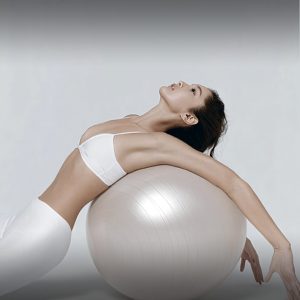
Body workshops go beyond movement. They are about caring for yourself in ways that feel supportive and healing. When you show up to move, you are also showing up to listen, release, and reconnect. Emotional tension often hides in the body, especially in the shoulders, hips, and chest. With every breath and stretch, you make space for that tension to soften and heal.
The workshops create a supportive environment where you can connect with your body and mind. It isn’t just about what your body can do, but how it feels doing it. When movement feels gentle, safe, and guided with care, your whole being begins to respond. That’s when true healing begins. It’s not forced — it’s felt.
You might cry, sigh, or simply feel a deep release. These are all signs that you’re connecting with parts of yourself that needed attention. This kind of emotional well being is just as important as physical fitness. Through regular sessions, you’ll build not just strength but a deep sense of self-trust. And when you trust your body, life feels a little lighter.
READ ALSO: Bicep Muscle Workout You Can Do Anywhere
Finding the Right Class for You
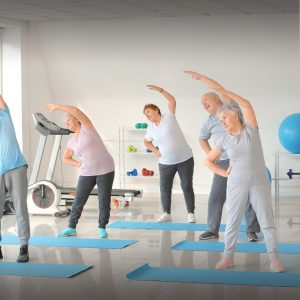
Choosing a class that feels right for you can make all the difference. The good news is that there are so many options now — from small in-person events to online sessions that you can take from the comfort of your home. Some people prefer the energy of a group, while others enjoy the quiet of a solo appointment. What matters most is that the class makes you feel comfortable and supported. You should leave feeling better than when you arrived.
Look for classes that match your current level of mobility and energy. Ask questions, read reviews, or even contact the instructor before your first session. You want to feel welcomed, not judged. Whether you’re joining a pilates-based group or attending a one-on-one session, the goal is to move with ease and confidence. It should feel like a space that’s made for you.
Don’t be afraid to try a few different options until you find one that suits you. Sometimes the best fit comes from trial and experience. And remember, the class is there to serve you, not the other way around. When you find a space that feels supportive, that’s when your body begins to open, heal, and thrive.
Tools and Tips for a Gentle Start
Starting a body workshop practice should feel easy and kind. You do not need much to begin, just a few small choices that help you feel calm, safe, and ready to move. Make a little corner in your home where you can be undisturbed, lay a soft pilates mat if you have one, and set a gentle timer so you do not rush.
Keep a small journal nearby to note how you feel, and let your breath guide each movement so you stay grounded. This simple, personal ritual helps you return to the practice week after week and supports your overall health and well being.
- Begin with five to ten minutes each day and let consistency matter more than intensity.
- Use a soft mat or towel for comfort and to protect joints while you explore mobility.
- Keep a short journal to track feeling, pain, energy, and small wins after each session.
- Practice breath cues such as inhaling to lift and exhaling to soften so your movements stay mindful.
- If discomfort or pain appears, pause, change range, and seek supportive advice from a teacher or health professional.
Listen to your body as you start and remember this is not about perfection but connection. You can join gentle classes or take private sessions if you want more support and expertise. Over time you will notice better posture, less stress in your shoulders, and more energy for life. Let your practice be flexible and personal, so it fits your week and your needs. When you begin slow and stay kind, you create a lasting habit that helps you feel more relaxed, pain free, and whole.
Whole Living Connection: Mindful Movement as a Lifestyle

Body workshops are more than just classes. They are part of a lifestyle that values presence, care, and balance. When you treat movement as a form of self-respect rather than a task to complete, your whole perspective changes. You begin to move not out of guilt, but out of love. That’s the heart of whole living.
These practices help you stay grounded through the chaos of everyday life. Whether it’s the breath that calms you or the stretch that soothes you, the impact reaches far beyond the mat. You start to make choices that support your energy and well being. And that energy carries into your relationships, your work, and your ability to show up in the world.
This is not a quick fix or a short-term plan. It’s a long, loving conversation between you and your body. One that grows stronger with each session, each breath, and each gentle moment of movement. When you live this way, you begin to trust that your body is your ally.
Final Takeaway: You Deserve to Feel Good in Your Body
You deserve a body that feels like home. Not one you’re constantly fixing or fighting, but one you listen to, care for, and honor. This journey isn’t about perfection. It’s about showing up for yourself, again and again, with softness and support. You are not alone on this path.
I’m here to remind you that every step you take, every breath you release, and every class you join brings you closer to balance and comfort. This practice doesn’t have to be hard to be effective. It simply needs to be yours. Choose what feels right, rest when you need, and continue when you can.
This is your invitation to join the body workshop of your own life. A place where you feel supported, strong, and seen. You don’t have to be perfect to begin — you just have to begin. And every time you return to your mat, your breath, or your intention, you are choosing to live well, and live whole.
UP NEXT: Mindful Body Whispers the Path to Inner Balance
Explore More
Calais-Germain, B. (2007). Anatomy of Movement. Seattle: Eastland Press.
Caldwell, C., & Victoria, M. A. (2011). Developing mindfulness in movement-based programs. Journal of Dance & Somatic Practices, 3(1–2), 201–215.
Goop. (n.d.). The mind-body connection: What it really means. Retrieved from https://goop.com/wellness/health/the-mind-body-connection/
Healthline. (n.d.). Why stretching is just as important as exercise. Retrieved from https://www.healthline.com/health/importance-of-stretching
Kabat-Zinn, J. (2013). Full catastrophe living: Using the wisdom of your body and mind to face stress, pain, and illness. Bantam.
Mehling, W. E., Wrubel, J., Daubenmier, J. J., Price, C. J., Kerr, C. E., Silow, T., Gopisetty, V., & Stewart, A. L. (2011). Body awareness: A phenomenological inquiry into the common ground of mind-body therapies. Philosophy, Ethics, and Humanities in Medicine, 6(1), 6. https://doi.org/10.1186/1747-5341-6-6
Mindful. (n.d.). 5-minute movement practices to start your day. Retrieved from https://www.mindful.org/5-minute-movement-practices/
Oh She Glows. (n.d.). Morning movement & energy rituals. Retrieved from https://ohsheglows.com
Pilates, J. H., & Miller, W. J. (1945). Return to life through Contrology. Presentation Dynamics LLC.















